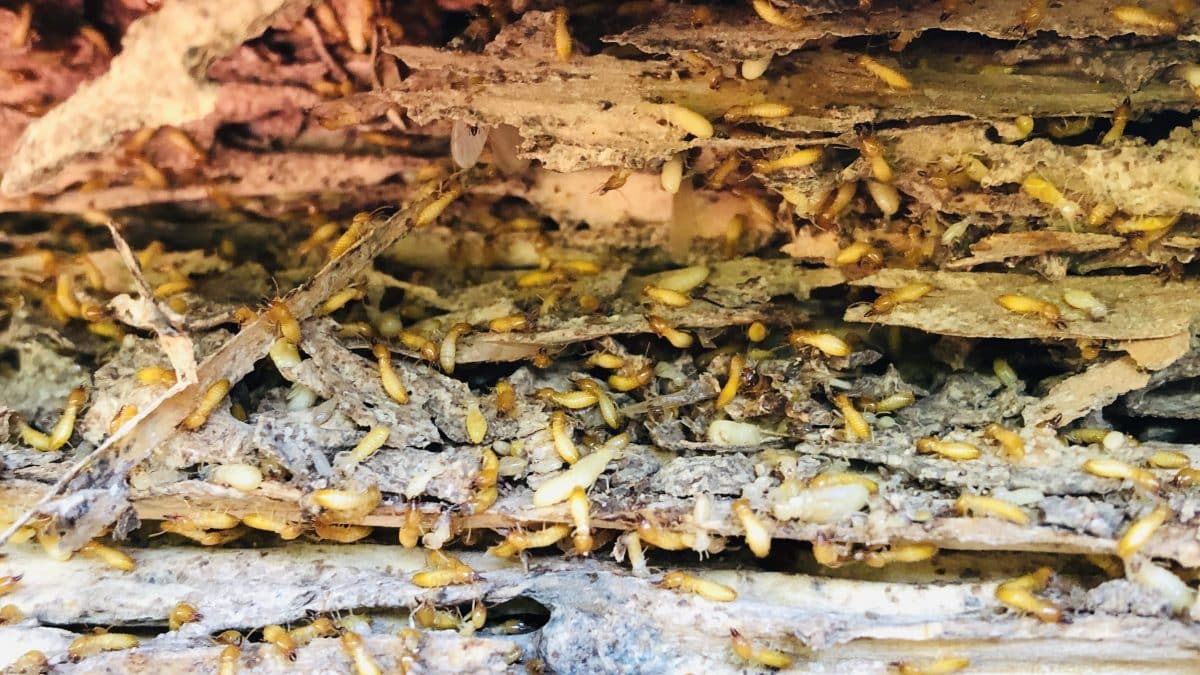Being able to identify termites isn’t easy, especially if you’re not an expert in xylophages. Termites are sneaky little pests that can enter your home through a crack as thin as an envelope and begin to cause damage as soon as they find wood in your home’s structure.
A well-organized termite colony can have more than a million hungry workers consuming more than 45KG of wood per year, and the average cost of termite treatment and damage repairs is more than €7,000. *
However, contrary to popular belief, just because a house has wood damage doesn’t mean that the suspect is always a termite. There are other types of insects that like to feed or build their homes out of wood, such as carpenter ants and carpenter bees. Since they have similar behavior to termites, they are not always properly identified or treated.
One of the most important steps for home protection is insect detection. To do that, it’s important to know not only what termites look like, but also what other pests can be mistaken for termites so you know what you’re dealing with and proper removal methods.
What do termites look like to the human eye?
How do you know if an insect is a termite? Below are some features:
- Length: about 1.5cm long or smaller
- Features: straight waist (the area of the body between the midsection and the rear section), straight antennae and wings of equal length.
- Color: White to Light Brown
The exact appearance of termites also depends on whether you are seeing worker termites or swarms.
Termites are found throughout Spain and are most prominent in hot climates. And a termite can’t tell the difference between a tree in the garden and the wood used to build our homes, so you can find them anywhere.
You may also have read that termites thrive in soil. This is true. However, some don’t need soil at all. Depending on where you live, you may find subterranean termites, as well as those that build their colonies in the same wood. Either type can be destructive to homes. It is important for termite control professionals to be able to differentiate species for proper treatment.
The two most common termites found in Spain are the subterranean termite (Reticulitermes) and the drywood termite (Kalotermes).
- Subterranean termites are cream-colored and pale.
- Drywood termites are usually pale brown, but their color can range from dark brown to light, yellowish brown. Some, but not all, have transparent or smoky gray wings.
What insects can be confused with termite?
Some insects can be mistaken for termites, not because of their appearance, but because of their behavior. Below are some examples.
1- Carpenter Ant

Carpenter ants necessarily resemble termites, but both carpenter ants and termites damage wood and can swarm, which can cause some confusion between the two. Like termites, carpenter ants swarm during their mating process and some have wings. But here are some differences between carpenter ants:
- Their waists are tapered, not straight.
- They have dark coloration.
- They are usually larger than termites.
- Their wings are unequal in length, with the hind wings being shorter than the front wings.
And while many ant species have wings, carpenter ants are commonly confused with termites due to their tendency to damage wood.
But unlike termites, carpenter ants don’t eat wood. However, they do tunnel and make their nests in it, so they can still cause damage to your home.
2- CARPENTER BEES

Like carpenter ants, carpenter bees are mistaken for termites because of the damage they cause to wood rather than their appearance. And like carpenter ants, carpenter bees don’t feed on wood, but they tunnel into it, drilling holes and creating nests. Their holes are larger than those created by carpenter ants and can be up to an inch in diameter.
The damage caused by carpenter bees is not as severe as that of termites, but it can cause cosmetic and sometimes even structural damage. The problem really begins when carpenter bees lay eggs in wood, forming new populations and increasing infestations over time. The holes they put in the wood eventually create rot and decay.
As far as carpenter bees are concerned, they look like bumblebees, but their abdomens are smooth and shiny rather than hairy and yellow. They also lack yellow markings on the abdomen.
Once you’ve figured out what type of pest you’re dealing with, the next step is to come up with a removal and treatment plan. While there are certainly DIY methods you can try, the most effective and long-lasting remedy is to consult a professional. Termites how to remove them request a free inspection.


